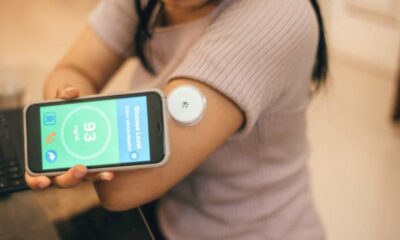Low blood sugar, or hypoglycemia, is a condition that occurs when blood glucose levels drop below normal levels, typically below 70 mg/dL. It can be a dangerous condition for individuals with diabetes, but it can affect anyone. Recognizing the symptoms and knowing how to manage low blood sugar is crucial for maintaining health and preventing serious complications. This article explains the causes, symptoms, and management of low blood sugar, with helpful tips for prevention.
What Causes Low Blood Sugar?
Several factors can cause blood sugar to drop too low, including:
- Skipping meals: Missing a meal can cause your body to use up available glucose without replenishing it.
- Excessive exercise: Intense physical activity without proper glucose intake can lead to hypoglycemia.
- Medications: Certain medications, particularly insulin or sulfonylureas, can lower blood sugar levels too much.
- Drinking alcohol: Drinking alcohol without eating can cause blood sugar levels to drop.
- Illness or infection: Illness or fever can increase insulin sensitivity, leading to low blood sugar.
Symptoms of Low Blood Sugar
Recognizing the signs of hypoglycemia is essential for taking quick action. Common symptoms include:
- Shakiness: One of the earliest signs of a blood sugar drop.
- Sweating: Unexplained or excessive sweating, particularly in cold conditions.
- Confusion or difficulty concentrating: Low blood sugar can affect brain function, leading to confusion or difficulty focusing.
- Dizziness or lightheadedness: Feeling faint or lightheaded, especially when standing up quickly.
- Irritability: A sudden change in mood, often becoming short-tempered or anxious.
- Fatigue: Feeling unusually tired or weak.
How to Manage Low Blood Sugar
If you or someone else is experiencing low blood sugar, it’s crucial to act quickly:
- Consume Quick-Acting Carbohydrates
The best way to raise blood sugar quickly is by consuming simple carbohydrates that are easily absorbed, such as:
- Glucose tablets (about 15 grams of carbohydrates)
- A small juice box (about 4 ounces)
- Regular soda (not diet soda)
- Hard candy or honey (if glucose tablets are unavailable)
- Recheck Blood Sugar
After consuming carbohydrates, wait 15 minutes and check blood sugar levels again. If it’s still low, repeat the process until blood sugar returns to normal levels.
- Eat a Balanced Snack
Once your blood sugar is stable, it’s essential to eat a small, balanced meal or snack with protein, healthy fats, and complex carbohydrates. This will help maintain blood sugar levels.
Preventing Low Blood Sugar
Here are some tips for avoiding low blood sugar episodes:
- Eat regular meals and snacks: Don’t skip meals, and try to have a balanced snack if you’re engaging in intense physical activity.
- Monitor blood sugar levels: Regularly checking your blood sugar, especially if you’re taking insulin or other medications, can help prevent lows.
- Adjust medication if necessary: If you frequently experience low blood sugar, consult with your healthcare provider about adjusting your medication.
- Stay hydrated: Dehydration can affect blood sugar levels, so drinking plenty of water is important.
When to Seek Medical Help
If you’re unable to raise your blood sugar levels or if symptoms worsen, it’s important to seek medical help immediately. Severe hypoglycemia can lead to unconsciousness or seizures, which require urgent medical attention.
Conclusion
Low blood sugar is a manageable condition when you know the symptoms and how to respond. By monitoring your blood sugar levels, following healthy eating habits, and being prepared with fast-acting carbohydrates, you can prevent and treat hypoglycemia effectively. Always consult your healthcare provider if you have concerns about managing low blood sugar or your diabetes treatment plan.

 Diabetology2 weeks ago
Diabetology2 weeks ago
 Diabetology1 week ago
Diabetology1 week ago
 Diabetology2 weeks ago
Diabetology2 weeks ago
 Diabetology1 week ago
Diabetology1 week ago
 Diabetology21 hours ago
Diabetology21 hours ago
 Diabetology4 hours ago
Diabetology4 hours ago
 Diabetology4 hours ago
Diabetology4 hours ago



